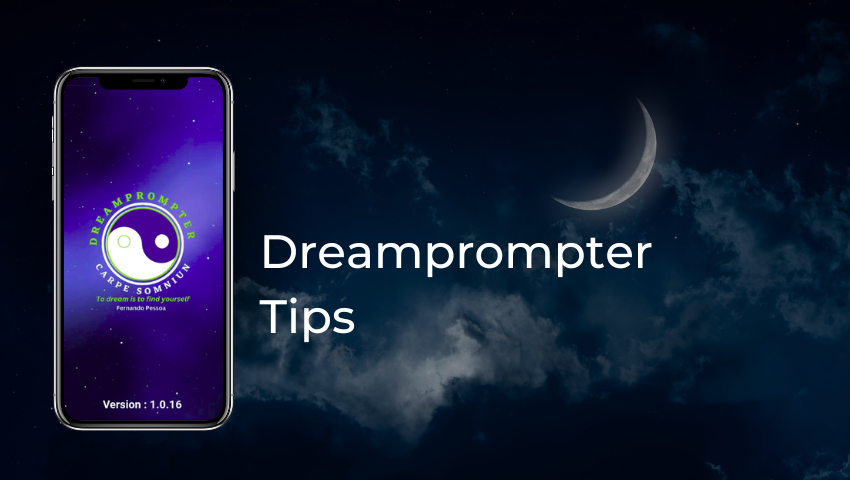“. . . papers and patents are increasingly less likely to break with the past in ways that push science and technology in new directions.”
Michael Park, Erin Leahey, Russell J. Funk , Nature, January 4, 2023
“There is a great need for efforts such as Brent Logan’s, and we commend him for his commitment and dedication to this very worthwhile work.”
Bill & Melinda Gates Foundation
Is nothing truly new? Despite eminent specialists, expensive research, and the sheer extent of knowledge, paradigm shifts seldom occur, while pivotal discoveries by a sole explorer are presumed extinct; here suggests otherwise (see also www.brentlogan.net ). As another breakthrough project takes wing, I anticipate skeptical before supportive reactions, therefore these adverse though requisite aspects for our binary kind may merit viewing through an eyewitness lens, unavoidable prejudice pertinent, autobiographic indulgence solicited; one’s person might yet represent many—individuals and disciplines . . . hope for all. This split history attempts explanation.
Following Seattle parentage (agrarian descendants, father a life insurance agent adept with any tool, mother an hospitable homemaker, both compassionate counsels, ever helpful, sensible conversationalists, decent pianists, steadfast churchgoers, community volunteers though apolitical, always aiding those less fortunate, believers in education, exemplars of gentility’s lost era, noble innocence (alas, virtues now mockable), I showed keen interest and some talent for the arts as well as sciences; whether abstract esthete or inquisitive tinkerer, pragmatic sleuthing proved my primary profession no matter which other employment masked an undercover life hard to keep hidden. Even so, perhaps said dual influences illustrate symbiosis whence creativity springs—the supreme asset if self supports collective sustenance.
A public library resident among childhood adventure stories (exploratory voyages, clever detectives), weekends idyllic at a grandparents’ farm (the other grandsire an official weather observer) after which horticulture bloomed lifelong (my compact orchard experiment just outside . . . in smoke from recent wildfires), summers aquatic, and the local university’s venerable museum (sarcophagi, fossils, insect collections, dioramas) and brass refractor, postwar years of classical keyboard lessons, inveterate philately (no nation exempt per budding globalism), neighborhood yardwork, newspaper route, boy scout treks seacoast to mountains, by adolescence a stipend had me cycling miles to paint with professionals, while selfmade telescopes and microscopes—besides a nonstop butterfly net (panpsychic regret thereafter)—alternated with simple chemical experiments; once forming a neighborhood club of space enthusiasts, amateur rocketry became obsessive, this penchant sidelining academic studies (serious private school after public torpor) where I launched another group whose test site monitored large solid propellant motors on a precursive computer, additionally reviving antique weather instruments to install a popular climate station matching one in my bedroom (anemometer spinning rooftop, its revolutions per blinking light indoors, wire antenna a radio kit link via treelimb with federal data . . . between tracking oceanic westerlies and nervous nuclear alerts for Cold War etiquette). These activities prompted mimeograph newsletters—writing and organizational skills constant. One summer the University of Washington’s Obstetrics and Gynecology department hired me as an eager menial, a superlative opportunity to watch researchers at their careful crafts (with postwork hours madcap in that elaborate, empty lab—explosive flasks another esthetic).
But the arts won out: mathematics prowess nil upon calculus, much Latin underscored this literature major’s smoggy years at Occidental College (academic hiatus as an army radio operator then information specialist cum photojournalist—Kennedy closeups eerie just months before his death—with an atomic artillery battalion in Germany, Europe a lifechanger), poetry soon the consuming passion—and still so, thousands manuscriptive, occasionally published less diffidence (creation my durable default)—several nonfiction works plus novels past and present, plaudits from sundry notables. However, after graduating (English B.A., M.A, University of Washington, a University of Iowa M.F.A. thesis in verse, “The Inventor”), I taught for several years, then with fundraising success over a decade directed Pacific Northwest education, public service, and health programs (observing fieldwork physicians, psychiatrists, psychologists, social workers), also an applied arts facility where my expressionist oils avocation felt quite at home. Most provocatively sprang a permanent love of philosophy—presocratics, sophists, existentialists, later focusing ecologic or anthropic as the two clashed to joint detriment. Before diverse interests and occupations merged, teenage testing for careers found me ideally suited to become a nurse (considerable hindsight concurs), while business and economics baffle yet—likewise electric circuits, plumbing, engines, or computers beyond their stone age iteration (i.e., this déclassé desktop); however, riding the English saddle at midage was a delightful surprise.
Meanwhile, following numerous miscarriages, my German spouse, Helga Bothe (youth on the timeless heath, Paris academics, flight attendant for Middle East routes, dressage devotee), happened upon a radio interview with an American couple who claimed reciting elementary material to their unborn children had resulted in impressive intelligence and artistic abilities—seemingly absurd since all parents speak or sing to their offspring in process, but she asked if such a practice could be standardized; I immediately thought of the nascent audiocassette player . . . though unsure what sonic input would be appropriate. After a night’s brainstorm that August 1982 at our horsefarm, during the next three years (as I wrote an exotic novel based upon this theme), dogged research in the University of Washington Health Sciences library led me to understand what had been steering my literary focus away from fictional characters: not their behavior alone but more its origins—developmental psychology knocking at the backdoor. For example, a sleeping fetus constantly experiences its mother’s bloodpulse pumping past the womb at sonic levels loud as a rockband—and this percussive pattern imprints lifelong (perhaps influencing fetal dreams, which commence about week 23): adults automatically cradle an infant over their heart . . . where in prehistoric times that familiar sound would likely quiet the baby against a predator’s interest; moreover, imagine what rhythm dominates most music.
So, by recording in utero, then utilizing the digital sampling device and real time analyzer, a curricularized series of earliest but cognitively familiar cardiac variants (slowly increasing tempo and tonal changes) could introduce recognizable information which might favorably affect formative data processing, an enrichment through neurogenesis at its most receptive stage—for lifetime benefit, precisely the process survivalistic evolution follows before massive brain cell pruning (to a normative if questionable standard now that we see how our species has poorly served planetary needs), this bellcurve depletion coincidental with full-term birth. The key question: would daily prenatal exposure to increasingly complex heartbeat sequences via an audiocassette player at safe but effective volume produce definitive assets? In 1986-91 I conducted a protocol pilot study with neonatal and infant assessments under obstetrician oversight, succeeded by a comparative clinical trial (1992-2001), presenting those outcomes along with my prelearning theory at professional congresses, peer-review journal publication commensurate (these detailed studies long available in full under “Technical Articles” on my website, www.brentlogan.net).
Specifically, beyond remarkable anecdotes, what credible validation of concept and performance? Besides fetal responsiveness to the ex utero sound patterns by rhythmic movements, standard birth scorings were consistently high (evoking repeated staff acclaim), with developmental prowess manifest in receptive and expressive linguistic measures—an astonishing record over the first few years, then academic excellence verified by cognitive tests. This new portrait of human potential realized appears at length as Chapter Eight, “Proof Positive”, in my 2003 book, Learning Before Birth: Every Child Deserves Giftedness, pages 87-101, with the detailed empirics accessible online—see above.
To attend the breakthrough discovery I established Prenatal Institute adjoining my home office, an ample research hub of prolific files, gravid bookshelves, project prototypes, and wall schematics, its operations interfaced planetary as well as in person; time zone windows for direct international contact assured little sleep.
After patenting and copyrights, commercialization via audiocassete format evolved to a microchip device, BabyPlus, distributors in 20 countries. Hundreds of global media reports and interviews drew avid attention; an hour UK documentary was viewed worldwide for years (available on YouTube as “Channel 4 Equinox Brave New Babies”, https://youtu.be/TWsfiYkJ6sg). Initial investors wanted me to add a medical degree, but I located a progressive alternative, Somerset University, whose academic staff represented the major British institutions, and was able to transfer all University of Washington doctoral coursework plus completing an intense year’s dissertation for a Ph.D. in developmental psychology—received just before my spouse’s decease from cancer at 48, after 21 married years a farewell uplift for us both; though childless, she had thoroughly enjoyed her last decade hosting annual picnics for the pilot study members and their families. Since then the product proliferated: from sales, shared units, outright shipment theft, and extensive piracy, at present several million have been prenatally enriched; not a corporate shareholder, modest and often erratic royalties meant my challenge has been to continue innovating. Too popular for professionals, with parents finding it overly academic, upon an agent’s advice a technical volume supplementing my prelearning book awaits print, while others occupy few spare hours.
But despite no insignificant number of beneficiaries (many now adults) gifted before birth by a paradigmatic discovery helping steward our precarious planet, criticism still ignores or remains unaware of what counters its concerns. Yes, frugal budgeting kept the pilot group small yet neither outside selection norms nor statistically insignificant, and one early milestone scale had been utilized creatively though congruent with its original purpose (as a spoon can fulfill the fork’s mission). Further, clinical trial concern faults comparative analysis because of evaluator involvement—but that precisely equips competing expertise: who better than different perspectives! Moreover, meticulous birth records and professional evaluations remain pristine, real data reproduced in text and online format for anyone to review if they only exert slight effort rather than emote received notions or prejudgment; why suspect motive when facts speak otherwise? Science is grossly disserved by arrogant claims or dyspeptic character slurs—at least let surprise testify under fairness, particularly when singular evidence mounts.
In 1992 I married Karin Mueller from Cologne, a classical ballerina who performed throughout Europe, Japan, and Morocco; she abides me, also the increasingly curious inventions: after my quarter-century’s longing, Dreamprompter finally emerges—much excitement! As the great Nobelist writer Jorge Luis Borges states:
. . . the work of shaping that irrational and giddy essence which comprises dreams is the most arduous mission one can engage, even if every other cosmic mystery has been explained . . .
Were I to hazard what ventures next, intuition (along with some favorable fumbles) suggests dreams, multiversal theory, and the classic double-slit photon/wave experiment might fuse fortuitous . . . watch for a literally outré outcome!
Notwithstanding what may seem an obdurate, institutional barrier to private probes about anything, who says that slammed doors have no cracks: peer there and our entire edifice (scarcely perfect; look around) might tremble! Opposites attract— even science and art, knowledge with emotion. Ever circumspect, honor yesteryear achievements but never fear the next, discover your further self through alleged complexities; absolute innovation awaits you . . . there is always room for one more.
Traveler’s Warnings
Crossing the borders of truth—always
at armed checkpoints—naturally
varies from expensive visas to surrender
of outdated passports, even turning back
when your contraband seems obvious;
in no event make fast moves fast.
Since you understand the language
of guns, maintain a straight face
before any odds, keeping your luggage
light and well-appointed (no rough patina
for the toughest leather); by all means
know your rights . . . or invent them.
And if through commitment you find yourself
on old ground, the borderguards smiling
like landmarks, continue wearing innocence
on your sleeve but check for subtler shifts
in boundaries—those annexations you forget
are drawn in sleep, the mandates of dream.




